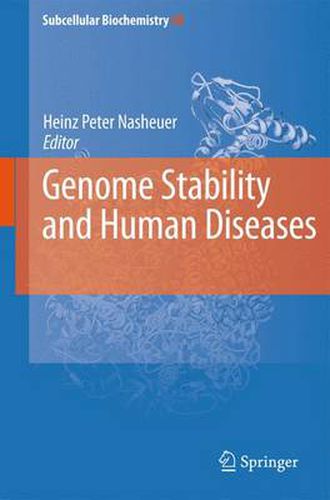Readings Newsletter
Become a Readings Member to make your shopping experience even easier.
Sign in or sign up for free!
You’re not far away from qualifying for FREE standard shipping within Australia
You’ve qualified for FREE standard shipping within Australia
The cart is loading…






This title is printed to order. This book may have been self-published. If so, we cannot guarantee the quality of the content. In the main most books will have gone through the editing process however some may not. We therefore suggest that you be aware of this before ordering this book. If in doubt check either the author or publisher’s details as we are unable to accept any returns unless they are faulty. Please contact us if you have any questions.
Since the establishment of the DNA structure researchers have been highly interested in the molecular basis of the inheritance of genes and of genetic disorders. Scientific investigations of the last two decades have shown that, in addition to oncogenic viruses and signalling pathways alterations, genomic instability is important in the development of cancer. This view is supported by the findings that aneuploidy, which results from chromosome instability, is one of the hallmarks of cancer cells. Chromosomal instability also underpins our fundamental principles of understanding tumourigenesis: It thought that cancer arises from the sequential acquisition of genetic alterations in specific genes. In this hypothesis, these rare genetic events represent rate-limiting ‘bottlenecks’ in the clonal evolution of a cancer, and pre-cancerous cells can evolve into neoplastic cells through the acquisition of somatic mutations.
This book is written by international leading scientists in the field of genome stability. Chapters are devoted to genome stability and anti-cancer drug targets, histone modifications, chromatin factors, DNA repair, apoptosis and many other key areas of research. The chapters give insights into the newest development of the genome stability and human diseases and bring the current understanding of the mechanisms leading to chromosome instability and their potential for clinical impact to the reader.
$9.00 standard shipping within Australia
FREE standard shipping within Australia for orders over $100.00
Express & International shipping calculated at checkout
This title is printed to order. This book may have been self-published. If so, we cannot guarantee the quality of the content. In the main most books will have gone through the editing process however some may not. We therefore suggest that you be aware of this before ordering this book. If in doubt check either the author or publisher’s details as we are unable to accept any returns unless they are faulty. Please contact us if you have any questions.
Since the establishment of the DNA structure researchers have been highly interested in the molecular basis of the inheritance of genes and of genetic disorders. Scientific investigations of the last two decades have shown that, in addition to oncogenic viruses and signalling pathways alterations, genomic instability is important in the development of cancer. This view is supported by the findings that aneuploidy, which results from chromosome instability, is one of the hallmarks of cancer cells. Chromosomal instability also underpins our fundamental principles of understanding tumourigenesis: It thought that cancer arises from the sequential acquisition of genetic alterations in specific genes. In this hypothesis, these rare genetic events represent rate-limiting ‘bottlenecks’ in the clonal evolution of a cancer, and pre-cancerous cells can evolve into neoplastic cells through the acquisition of somatic mutations.
This book is written by international leading scientists in the field of genome stability. Chapters are devoted to genome stability and anti-cancer drug targets, histone modifications, chromatin factors, DNA repair, apoptosis and many other key areas of research. The chapters give insights into the newest development of the genome stability and human diseases and bring the current understanding of the mechanisms leading to chromosome instability and their potential for clinical impact to the reader.